Essayer OR - Gratuit
Up on the Roof!
Practical Poultry
|April 2017
Here’s our practical guide to the various hen house roofing material options, and the important differences between them.
-

The primary function of any chicken house is to provide shelter for the birds inside it. So it stands to reason that an effective roof is an essential requirement, and the material it’s made from – or covered with – plays a vital role in the effectiveness of the whole set-up.
There are both new and old material options and the choice between them depends on a number of factors, including budget, personal preference and convenience.
Felt
Roofing felt is probably the most popular and traditional of hen house roof coverings, and has been used for many years to good effect on chicken houses, other livestock buildings as well as garden sheds etc.
Young and well-fitted roofing felt offers an excellent barrier against the elements as well as a reasonably economic solution, but it’s important to appreciate that this material most definitely has a service life.
You typically buy roofing felt from a farm/builders supply specialist, and it comes in a variety of thicknesses; some of which are very heavy. A visit to your local do-it-yourself store is another option, where you’ll usually find rolls of felt for sale that’ll be suitable for all types of sheds and animal housing. Obviously, though, the cost can vary significantly from outlet to outlet, and area of the country can play a part, too.
You’ll need to measure-up carefully to work out your initial requirements, and take a bit of time with the planning to ensure that you create as few joints as possible when covering a new roof. Joints always present a potential weakness, and a route inside for water if they’re not properly overlapped and sealed.
Cette histoire est tirée de l'édition April 2017 de Practical Poultry.
Abonnez-vous à Magzter GOLD pour accéder à des milliers d'histoires premium sélectionnées et à plus de 9 000 magazines et journaux.
Déjà abonné ? Se connecter
PLUS D'HISTOIRES DE Practical Poultry
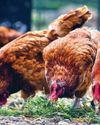
Practical Poultry
Growing food for Chickens
Mary Larham explores some crops to grow on your holding…
5 mins
January - February 2020
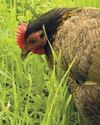
Practical Poultry
Poultry in the garden – the truth!
Jo-Jane Buxton shares her experiences
2 mins
January - February 2020

Practical Poultry
The British Waterfowl Association
Which came first, the goose or the egg?
3 mins
January - February 2020

Practical Poultry
WHY FIT A FAN IN AN INCUBATOR?
Brinsea Products, the Incubation Specialists explain the difference between still air and forced draught
8 mins
January - February 2020
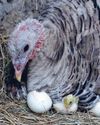
Practical Poultry
Incubating turkey eggs
Janice Houghton-Wallace looks at broody turkeys and artificial incubation
4 mins
January - February 2020
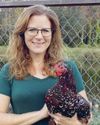
Practical Poultry
Chicken nesting box herbs
Diana Clauss owns The Blue Feather Farm, in St Cloud, Florida, home to chickens, ducks, goats, and Anatolian Shepherd dogs.
4 mins
January - February 2020
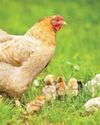
Practical Poultry
Incubate in January?
Jessica Wombwell says plan the breeding
5 mins
January - February 2020
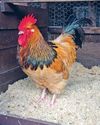
Practical Poultry
Andy's DIARY
Andy emphases the importance of keeping out damp and wet but allowing ventilation even in cold weather
5 mins
January - February 2020
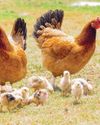
Practical Poultry
Feeding for Breeding
It may be winter, but as Joanna Palmer, nutritionist for Smallholder Range explains, now’s the time to get your flock in tiptop shape and plan ahead for a successful breeding season next spring.
3 mins
January - February 2020
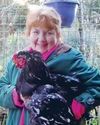
Practical Poultry
A chick named Cuckoo raised by a duck!
Chris Hammacott and her husband live on a small croft in the Outer Hebrides, they keep a ‘no kill’ flock or rare and rescue sheep which they use to spin and weave rugs. They also share the 8 acres with hens, ducks, cats and 9 rescue pugs.
7 mins
January - February 2020
